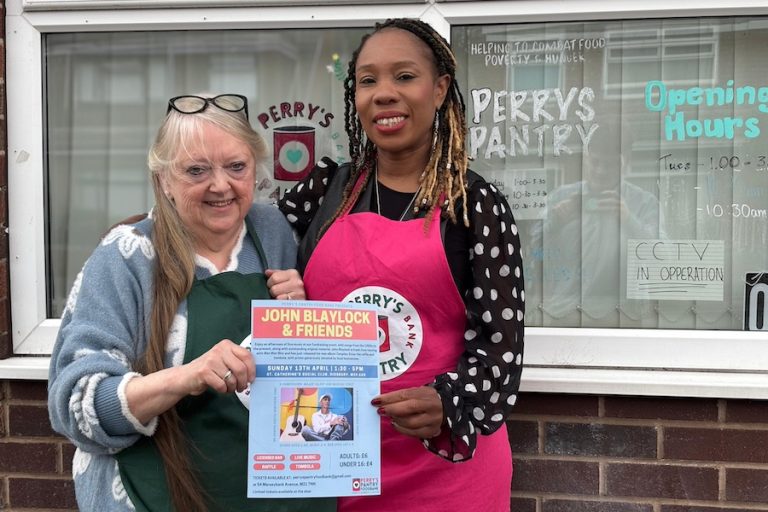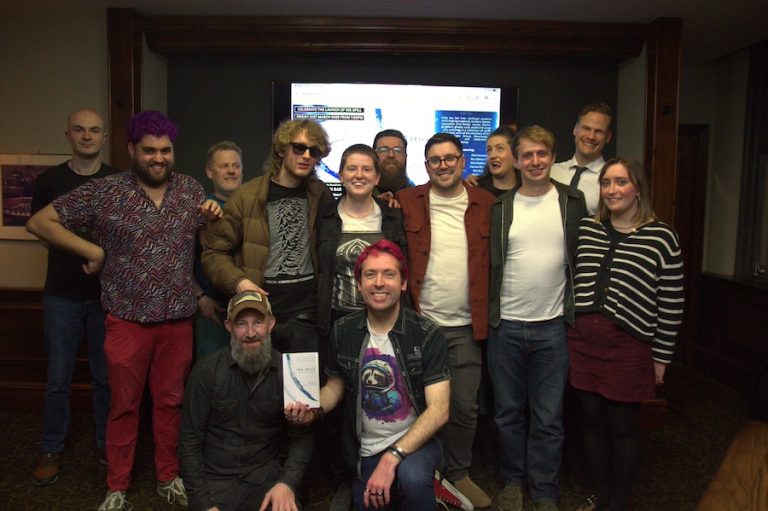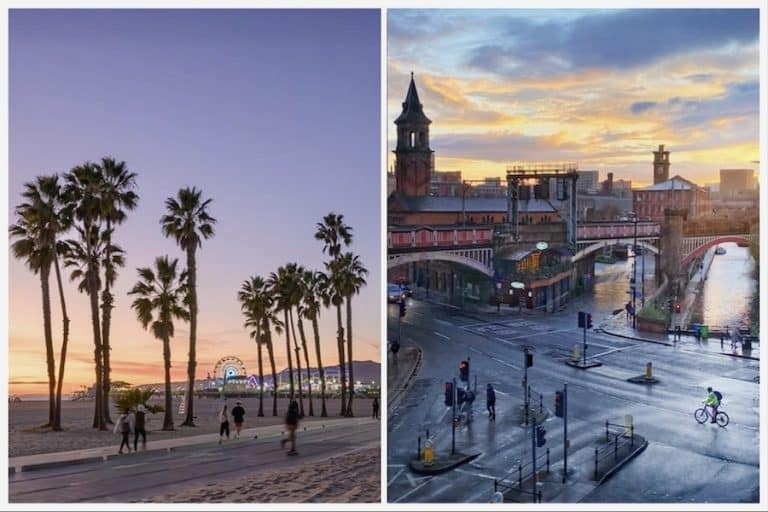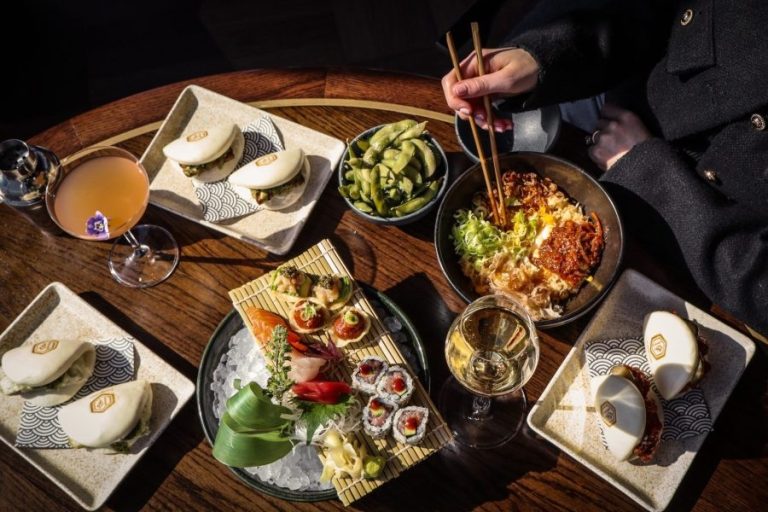Book review: Sonic Youth Slept On My Floor by Dave Haslam
- Written by Emily Oldfield
- Last updated 7 years ago
- Books, City of Manchester, Culture, People

Dave Haslam’s latest book begins with a haircut. And a very particular one at that. A twenty-odd-year-old Dave is having a close trim in the basement of the Hacienda in a salon called Swing. It’s 1985 Manchester, he’s running a music fanzine called Debris and working part-time in Affleck’s Palace, having started out into the world of DJing with a night at an underground club called Man Alive.
This painstakingly detailed book has the qualities of a good haircut – unlike so many Manchester music memoirs and retrospectives out there, which seem more like a full-on head injury by comparison.
It may be close to the skin, but what this book isn’t is close to the bone.
There already exist many accounts of dirty beats, drug binges, illicit affairs, and full-on arguments which leave keen music fans awaiting the next instalment of what was undoubtedly a notorious era in the city’s musical past; 80s and 90s stars like The Smiths, The Stone Roses, The Happy Mondays, the rise of electronic music and Acid House.
Dave has a slower, more polished approach to the era that may be unfamiliar for some.

He sashays through how he started out promoting gigs, moved through Man Alive, DJing at The Venue and went onto be a significant figure behind the Temperance and Wide nights at the Hacienda. Then on to Yellow at The Boardwalk, America with DJ Mike Pickering, and even my native Burnley, before going to Paris.
Considering these are times which went by in a blur for many, Dave spins a succulent narrative which uses his unique perspective on the times to provide an insight quite different from existing material about the period.
For whilst there are many music memoirs out there from the perspective of bands of the times, musicians, even journalists, a disc jockey brings something different. He’s on the periphery, spectating.
His experience as a DJ (often going under the name of DJ Hedd) gives him a valuable overview not just of artists, but music tastes, and audiences. A whole new demographic to consider from behind the decks.
Yes, things may have developed into Madchester, but it was a passionately mixed and monitored Madchester – not just spinning records, but recording it himself, writing for the NME. His is a valuable insight into the forces behind the phenomena, giving the book a real-life-meets-reportage style.
Dave is called underfed by Steve Albini, Sonic Youth really do sleep on his floor (though The Butthole Surfers are significantly less impressed), John Peel tells him the best way to tell if an Indian restaurant is any good (it’s the Tarka Dal), he chats with Lemn Sissay in Fuel café-bar, DJ’s at Eammon Holmes’ birthday, buys David Byrne biscuits.
Here the dynamics between people in the music industry are opened in a way which makes it resonant, rich and culturally significant.
But is music all there is? For a man who recently sold his record collection, this suggests someone keen to emphasize there is much more than just a material connection to music.
Although the book does contain some personal details, including a section on his childhood, his family and his mother’s brave fight and tragic death from cancer, some parts of his life are only lightly brushed.
The book briefly introduces Rachel, the mother of his first child. Another partner, Catherine, is only brought into the story by her pregnancy.
This may seem odd but it does illuminate what I think is an important aspect of the book. It isn’t an autobiography: it’s the memoirs of a DJ usually associated with The Hacienda (he played there more than 450 times), eloquently told.
The only love affair he writes about in detail is with Manchester and its music.
What we learn about Dave Haslam is actually very little. He isn’t a fan of the Black Eyed Peas (though Jeremy Kyle apparently is). But at times it feels like we know more about his taste in poetry than we know about him.
I would have perhaps liked more detail on the personal details of him and the Manchester he lived in. Although we get glimpses of Whalley Range, Moss Side and most notably Amberidge Walk in Hulme, I was left wanting more.
However, this is perhaps one of the strengths of the book. The music-inspired depth of this book is unmuddied by the personal diversions (or as seen in some recent examples, personal jibes and criticisms) so many music memoirs stray into.
This is a book full of surprises, pulled together with great style, occasionally dizzying but never losing depth.
Dave turns words like he turns tunes, with passion for the impact they can have. An intense attention to detail and literary skill make this a book of lasting significance about the Manchester music scene.
Sonic Youth Slept on My Floor; Music, Manchester & More is published today by Little, Brown.
- This article was last updated 7 years ago.
- It was first published on 24 May 2018 and is subject to be updated from time to time. Please refresh or return to see the latest version.
Did we miss something? Let us know: press@ilovemanchester.com
Want to be the first to receive all the latest news stories, what’s on and events from the heart of Manchester? Sign up here.
Manchester is a successful city, but many people suffer. I Love Manchester helps raise awareness and funds to help improve the lives and prospects of people across Greater Manchester – and we can’t do it without your help. So please support us with what you can so we can continue to spread the love. Thank you in advance!
An email you’ll love. Subscribe to our newsletter to get the latest news stories delivered direct to your inbox.
Got a story worth sharing?
What’s the story? We are all ears when it comes to positive news and inspiring stories. You can send story ideas to press@ilovemanchester.com
While we can’t guarantee to publish everything, we will always consider any enquiry or idea that promotes:
- Independent new openings
- Human interest
- Not-for-profit organisations
- Community Interest Companies (CiCs) and projects
- Charities and charitable initiatives
- Affordability and offers saving people over 20%
For anything else, don’t hesitate to get in touch with us about advertorials (from £350+VAT) and advertising opportunities: advertise@ilovemanchester.com



The eclectic group that’s been helping writers cut their teeth for 50 years

Manchester and Los Angeles prove that opposites really do attract

“His presence will be deeply missed” Children’s hospice bids farewell to their visionary CEO

















